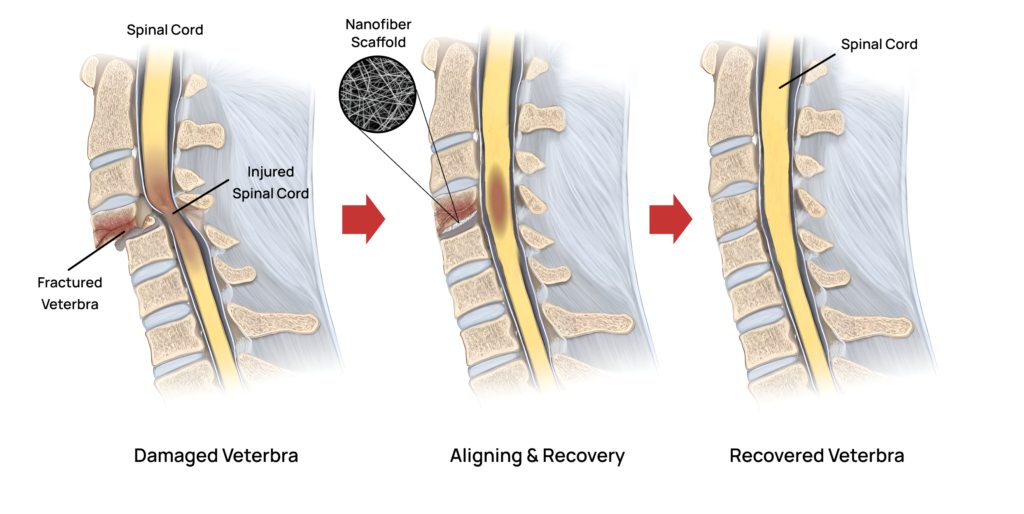
Spinal cord injury (SCI) affect hundreds of thousands of people each year. Recovery is often slow and incomplete, with patients facing lifelong challenges. But now, nanotechnology offers new hope. Scientists are developing materials that help nerves regrow, reconnect, and restore lost function.
This could transform how we treat spinal injuries in the near future.
A New Frontier: Using Nanofiber Scaffolds in Spinal Cord Repair
Researchers have developed nanofiber scaffolds, tiny thread-like structures made from biodegradable polymers. These scaffolds mimic the natural environment of nerve tissue. When implanted at the injury site, they guide damaged nerve cells to grow in the right direction.
The structure, spacing, and surface chemistry of nanofibers can also be engineered to promote healing. Unlike traditional methods, nanofibers can physically support axonal regeneration while also delivering therapeutic agents directly to the injury.
How Nanofibers Work in Spinal Cord Healing

Fig. 1 Spinal Cord Injury healing mechanism
Nanofibers serve as a regenerative platform by:
- Directing Nerve Growth: Their aligned structure helps axons (nerve fibers) regrow along specific pathways.
- Delivering Drugs or Growth Factors: They can be loaded with molecules that reduce inflammation and promote cell survival.
- Integrating with the Body: Made from biocompatible materials, nanofibers degrade naturally over time as tissue heals.
In animal models, these fibers have shown strong potential to reduce scarring, encourage nerve repair, and restore motor function.
Key Benefits of Nanofiber-Based SCI Treatment
Nanofiber scaffolds offer several advantages over conventional spinal cord treatments:
- Precision-Guided Regeneration
The fibers guide nerve growth with high spatial control. - Reduced Inflammation and Scar Formation
By delivering anti-inflammatory drugs directly, they help create a healing-friendly environment. - Minimally Invasive Possibilities
Some studies explore injectable nanofiber gels that conform to irregular injury sites. - Customizable for Patient Needs
Nanofibers can be tailored in thickness, composition, and drug-loading capacity to suit different injuries.
The Bigger Picture: From Lab to Clinic
Right now, most nanofiber spinal therapies remain in the experimental or preclinical stage. However, rapid progress in biomaterials, neuroscience, and regenerative medicine is pushing these technologies closer to clinical trials.
Some research groups have even started combining nanofibers with stem cells or electrical stimulation, creating multi-modal treatments that offer even greater healing potential.
Looking Ahead: A Future Without Paralysis?
The dream of reversing paralysis is no longer science fiction. With nanofiber technology, scientists may one day help patients regain mobility, sensation, and independence after spinal cord injury.
This isn’t just about healing tissue, it’s about restoring lives.

